 | |
Pete Seeger with Johnny Cash - It Takes A Worried Man
|
|

Jackson Rising:
New Economies Conference
|
 | |
Journal of the Black Left Unity Network
|
|

New CCDS Book Reporting on Vietnam
|
 The new annual edition of our journal of discussion and analysis is now out. More than 130 pages, it includes 20 articles on organizing, racism and the right. Cost is $10 plus shipping. Or get one by becoming a sustainer. Click the title to buy it directly. The new annual edition of our journal of discussion and analysis is now out. More than 130 pages, it includes 20 articles on organizing, racism and the right. Cost is $10 plus shipping. Or get one by becoming a sustainer. Click the title to buy it directly.
|
Blog of the Week... 
|
|
Radical Jesus:
A Graphic History of Faith 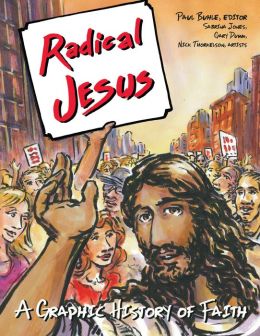 By Paul BuhleHerald Press By Paul BuhleHerald Press
|

Check out what CCDS has been doing...
|
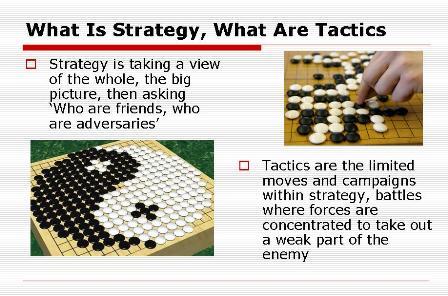 Keep On Keepin' On Keep On Keepin' OnStrategy and Tactics Slide Slow, Class and Privilege, the Green New Deal ...and other Short Posts on Tumblr by Carl Davidson
|

Edited by Carl Davidson Revolutionary Youth the the New Working Class: The Praxis Papers, the Port Authority Statement, the RYM Documents and other Lost Writings of SDS
Changemaker, 273pp, $22.50
For the full contents, click the link and view 'Preview' under the cover graphic.
|
|
By Randy Shannon, CCDS

"Everyone has the right to work, to free of employment, to just and favorable conditions of work and to protection against unemployment."
- United Nations Universal Declaration of Human Rights, December 10, 1948
I. Introduction
The "Great Recession" that began in 2007 has caused the greatest percent of job losses since the Great Depression of 1929. This crisis is the end of an era of unrestrained 'neo-liberal' capitalism that became public policy during the Reagan administration. The crisis marks a new level of instability with the growth of a global financial elite that targeted US workers and our trade unions after World War II.
|
|
Order Our
Full Employment Booklets
 |
...In a new and updated 2nd Edition
Capitalism may well collapse under its own excesses, but what would one propose to replace it? Margaret Thatcher's mantra was TINA...There Is No Alternative. David Schweickart's vision of "Economic Democracy" proposes a serious alternative. Even more fundamentally, it opens the door to thinking about alternatives. His may or may not turn out to be the definitive "successor system," but he is a leader in breaking out of the box. |
We Are Not What We Seem:
Black Nationalism and Class Struggle in the American Century
By Rod Bush, NYU Press, 1999
|
 A Memoir of the 1960s A Memoir of the 1960s
by Paul KrehbielAutumn Leaf Press, $25.64 | | Shades of Justice Video: Bringing Down a President, Ending a War |
|

Essays on Mondragon, Marx, Gramsci
and the Green and Solidarity Economies |
Solidarity Economy:What It's All About

Edited by Jenna Allard, Carl Davidson and Julie Matthaei
Buy it here...
|
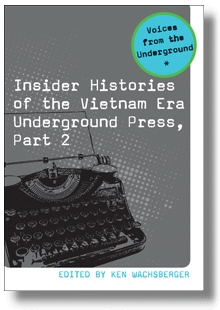
- Foreword by Susan Brownmiller
- Preface by Ken Wachsberger
$37.50 + $6 shipping
|
|
Discussion Documents for a Militant Movement
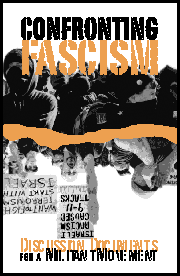
By Don Hamerquist
|
|
|
|
An Invitation to CCDSers and Friends...
 One Step Forward, One Step Forward,
One Step Back:
Year of Struggle
and Stagnation
We're the Committees of Correspondence for Democracy and Socialism...Do you have friends who should see this? Pass it on...Do you have a blog of your own? Others you love to read every day? Well, this is a place where you can share access to them with the rest of your comrades. Just pick your greatest hits for the week and send them to us at carld717@gmail.com!
Most of all, it's urgent that you oppose war on Iran, defend voter rights, plan for 2014 races now, oppose austerity, support the 'Moral Mondays' in North Carolina, the Congressional Progressive Caucus' 'Back to Work Budget'! We're doing more than ever, and have big plans. So pay your dues, make a donation and become a sustainer. Do it Now! Check the link at the bottom... |
50 Is the New 65: Older Workers Getting Booted from Their Jobs - and Denied New Opportunities

Age discrimination could be headed for you, sooner than you think. Editor's note: This is part of Lynn Parramore's ongoing AlterNet series on job insecurity and part of the New Economic Dialogue Project.
By Lynn Stuart Parramore
Alternet
Dec 21, 2013 - In every corner of America, millions of people are terrified of losing their jobs and falling into financial ruin. Men and women with impressive professional achievements and credentials are being let go, nudged out and pushed aside. They are pounding the pavement and scouring the job sites, but find themselves turned away even for the most basic retail jobs. Not because they aren't competent. Not because they lack skills. But simply because they have a gray hair or two.
This is not just a story of people in their 60s or 70s. Workers as young as 50 are shocked to find themselves suddenly tossed onto the employment rubbish heap, just when they felt on top of their game. They're feeling stressed, angry and betrayed by a society which has benefited greatly from their contributions.
As the global population grows older, age discrimination is on the rise. It could be headed for you, much sooner than you think.
'I Got Thrown Away'
Jan, a marketing executive from southern California, is just 51, and she has already learned the heartbreak and frustration of age-related job insecurity.
She was flying high as the head of marketing for a large financial planning firm when she was laid off in 2009 at the age of 47. The recession had done its damage, and her firm had to let some people go - mostly the youngest and oldest employees. Jan understood why the layoff happened, as sad as it was. Her firm gave her great recommendations and kept her on as a consultant for a year.
But she was not prepared for what happened when she tried to find another job.
First Jan applied for positions similar to her previous employment at banks and other financial institutions. Nothing. Keeping upbeat, she widened the net, applying for all marketing and communications jobs advertised in a 40-mile radius of her home. Still nada. Finally, she started applying for retail jobs and was shocked to find that she could not even land these. Jan got an interview at Barnes & Noble, but the store didn't call her back, and she wondered if all the young people on the floor had something to do with it. She tried a local bridal shop, thinking that she was the same age as the mothers of the brides and would be a good fit. They didn't hire her. Even Target turned her down for a job as a store clerk. No reason was given. That's when she started to panic.
"It's been difficult on my family," Jan says. "My husband was a lawyer, but he has become disabled. My daughter felt embarrassed that I couldn't find a job, and I've had to explain to her why she shouldn't be. I had to explain to her that I was not ashamed, that I was mad. I had done everything I was supposed to do. I had gone to college, then to grad school. I worked very hard and I had a lot of success. Then I got thrown away."
In researching this article, I heard many stories like Jan's, from Americans from all walks of life. A commercial fisherman with 30 years experience from Tucson, Arizona has sent out dozens of applications, but gets zero bites. An Ohio IT professional with over 30 years experience was let go after 15 years at his company, and now finds himself working in a bottom-tier customer service position with 20-year-olds. ...(Click title for more)
|
|

Joseph Epstein argues in the Wall Street Journal that we need more rich white men in power, preferably WASPs.
By Adam Peck
Alternet
Dec 23, 2013 - There are a lot of problems in Washington, D.C these days, but not many solutions to them. Inefficiency, an allergy to cooperation, and stiff resistance to pragmatism have all ground the federal government to a stand-still. But one op-ed contributor to the Wall Street Journal knows what the real problem is: not enough rich, white men.
In Saturday's paper and online, author Joseph Epstein mourns the collapse of what he describes as the "genuine ruling class, drawn from what came to be known as the WASP establishment," (WASP, the commonly-held acronym for White, Anglo-Saxon Protestant). Instead, he argues, we are living in a meritocracy, governed not by an elite subset of the uppermost crust of society but rather by a group of people who overcame some kind of adversity and achieved success thanks to their own merits, not based on what family they were born into. This, according to Epstein, is a tragedy.
Epstein's embrace of white privilege (or is it power?) is almost too transparent, resembling something closer to satire than to outright racism. And yet he gives no reason to believe that he isn't completely serious when he argues that modern day "corruption, scandal and incompetence" are hallmarks exclusive to this new era of non-white rule. Or when he memorializes the virtues of keeping those not born into the "WASPocracy" away from the halls of power. Or when he faults the leadership of the country's top colleges for its role in ending white rule by "lessening the number of legacies automatically admitted, and using racial preferences to encourage the enrollment of blacks."
Instead, Epstein argues, we should return to an era of WASP rule. Why? Because rich, white men born into rich, white christian families would never lead the country astray:
A financier I know who grew up under the WASP standard not long ago told me that he thought that the subprime real estate collapse and the continuing hedge-fund scandals have been brought on directly by men and women who are little more than "greedy pigs" (his words) without a shred of character or concern for their clients or country. Naturally, he added, they all have master's degrees from the putatively best business schools in the nation.
Thus far in their history, meritocrats, those earnest good students, appear to be about little more than getting on, getting ahead and (above all) getting their own. The WASP leadership, for all that may be said in criticism of it, was better than that.
Epstein's contempt for minorities - namely, that they don't belong anywhere near positions of authority - isn't reserved simply for race. Back in the 1970s, Epstein penned a story for Harper's Magazine in which he expressed his desire to "wish homosexuality off the face of this earth." He added, of his four sons, "nothing they could ever do would make me sadder than if any of them were to become homosexual." Those comments led to sit-ins and protests outside of Harper's offices, and Epstein has never apologized (and in factdismissed his critics, some 30 years later, as simply incapable of understanding his own "textured thought").
Perhaps that explains why Epstein reserves so little space (50 of his 2200+ word essay) to the shortcomings of WASP rule: he simply doesn't care that many of the leaders from his idyllic "WASPocracy" looked the other way on issues of racism, homophobia, poverty and inequality when they were in power.
And while the U.S. Senate - historically the wealthier and less diverse of the two chambers - may not be sufficiently white for Epstein's liking (only 95 percent of U.S. Senators are caucasian), they still do a very good job of tending to the needs of their fellow rich people instead of the needs of middle class and low-income families. ...(Click title for more)
|
|
Elizabeth Warren Comes Down Hard Against Keystone XL Pipeline While Hillary Clinton's Allies Push It Ahead
By Eric Zuesse
Progressive America Rising via Alternet.org
Dec 21, 2013 - On Friday, December 20, Democratic U.S. Senator Elizabeth Warren finally separated herself clearly from former U.S. Secretary of State Hillary Clinton, regarding the issue of climate change and global warming.
TransCanada Corporation wants to build the Keystone XL Pipeline to carry oil from Alberta Canada's tar sands to two refineries owned by Koch Industries near the Texas Gulf Coast, for export to Europe. Hillary Clinton has helped to make that happen, while Elizabeth Warren has now taken the opposite side.
Secretary of State Clinton, whose friend and former staffer Paul Elliot is a lobbyist for TransCanada, had worked behind the scenes to ease the way for commercial exploitation of this, the world's highest-carbon-emitting oil, 53% of which is owned by America's Koch brothers [3]. (Koch Industries owns 63% of the tar sands, and the Koch brothers own 86% of Koch Industries; Elaine Marshall, who is the widow of the son of the deceased Koch partner J. Howard Marshall, owns the remaining 14% of Koch Industries.)
David Goldwyn, who was former Secretary Clinton's Special Envoy and Coordinator for International Energy Affairs, [4] is yet another lobbyist for TransCanada. [5] So, TransCanada has two of Hillary Clinton's friends working for it. Elliot and Goldwyn worked with Clinton's people to guide them on selecting a petroleum industry contractor (not an environmental firm or governmental agency) to prepare the required environmental impact statement for the proposed pipeline.
Secretary Clinton's State Department allowed the environmental impact statement on the proposed Keystone XL Pipeline to be performed by a petroleum industry contractor that was chosen by the company that was proposing to build and own the pipeline, TransCanada. That contractor had no climatologist, and the resulting report failed even at its basic job of estimating the number of degrees by which the Earth's climate would be additionally heated if the pipeline is built and operated. Its report ignored that question and instead evaluated the impact that climate change would have on the pipeline, [6] which was estimated to be none.
President Obama is now trying to force the European Union to relax its anti-global-warming regulations [7] so the EU will import the Kochs' dirty oil. His agent in this effort is his new U.S. Trade Representative, Michael Froman, from Wall Street.
But on December 20, Senator Warren signed onto a letter criticizing [8] the Obama administration's apparent effort to force the European Union to agree to purchase this oil. As the Huffington Post's Kate Sheppard reported, "Six senators and 16 House members, all Democrats, wrote a letter to Froman on Friday asking him to elaborate on his position on the matter. 'If these reports are accurate, USTR's [the U.S. Trade Representative's] actions could undercut the EU's commendable goal of reducing greenhouse gas emissions in its transportation sectors,' these 22 Democratic lawmakers wrote."
This is, essentially, a rebellion by 22 progressive congressional Democrats against the Clinton-Obama effort to provide a market for the Kochs' oil. The letter was actually written by Representative Henry Waxman and Senator Sheldon Whitehouse, and co-signed by senators Barbara Boxer, Ed Markey, Dick Durbin, Jeff Merkley, and Elizabeth Warren; and Representatives John Conyers, Jr., Barbara Lee, Raśl M. Grijalva, Rush Holt, Louise M. Slaughter, Jerrold Nadler, Judy Chu, Peter DeFazio, Anna G. Eshoo, Sam Farr, Peter Welch, Alan Lowenthal, Mark Pocan, and Steve Cohen.
What is at issue in the Keystone XL and Alberta tar sands matter is governmental policies that will determine whether the tar-sands oil will undercut the production-costs of normal oil. ...(Click title for more)
|

Warren Buffett's $1 Billion Energy Rule: Wind is Cheaper than Coal
By Giles Parkinson
SolidarityEconomy.net
Dec 19, 2013 - Legendary US investor Warren Buffett hit the headlines this week when his MidAmerican Energy subsidiary made the biggest ever order for onshore wind turbines - a $1 billion order that will gladden executives of German wind turbine maker Siemens.
The turbines are part of Buffett's previously announced plans to invest $2 billion of wind energy investments into the state of Iowa, which will soon source 50 per cent of its electricity needs from wind energy, and begin exporting that capacity to neighbouring coal states.
More importantly, however, it underlines how the cost of wind energy has fallen so dramatically in the US, and elsewhere, to the point that it is now demonstrably cheaper than new coal-fired plants, and new gas-fired generation, and is even challenging existing coal-fired generation on costs.
Recent contracts for wind energy in Texas have been written as cheaply as $25/MWh. Granted, that includes a tax credit, but it still represents wind energy at a levellised cost well below $50/MWh. This is similar to prices struck in Brazil, where 2.3GW of wind energy was recently allocated in an auction at an average price of $47/MWh. These prices have undercut coal and gas fired generation by such a margin that Brazillian authorities had to create a separate auction mechanism for those fuels, although there is no doubt whether they will bother.
Wind energy may have been around for several decades, but it is still enjoying significant cost decreases. Bloomberg estimates turbine prices have fallen 26 per cent in the last two years, and new structures and mechanisms, not to mention the interest of Buffett and other mainstream investors, are bringing down financing costs as well.
Bloomberg estimates that wind power is now within 5.5 per cent of the cost of electricity from existing coal assets, and the American Wind Energy Association says that wind farms are now profitable without subsidies - which is just as well because in many states they don't get any, apart from mandates for renewables to be constructed - laws which are being vigorously fought by incumbent fossil fuel generators and their lobbyists.
"If Congress were to remove all the subsidies from every energy source, the wind industry can compete on its own," AWEA's Tom Kiernan said at a press conference at a Siemens factory in Fort Madison, Iowa, this week....(Click title for more)
|
The 'Precariat,' the New and Dangerous Class
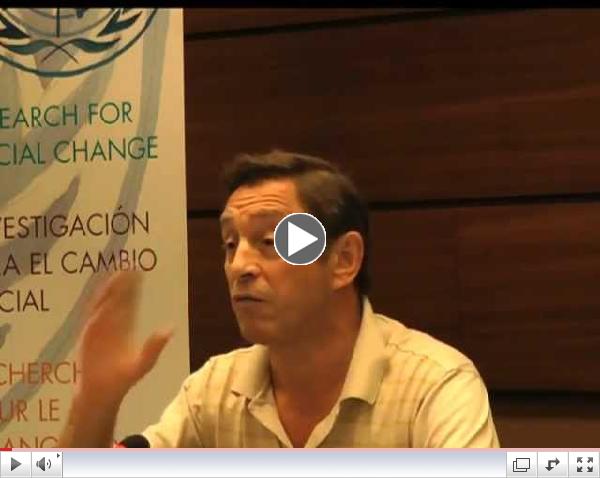 | |
Guy Standing on his book, 'The Precariat'
|
.
|
Jesus was a Palestinian and Why it Matters
 By Mast Qalander By Mast Qalander Muslim Reverie
Dec. 25, 2013 - Because of modern alarmist reactions to the word "Palestine," many non-Arabs and non-Muslims take offense when it is argued that Jesus was a Palestinian (peace be upon him). Jesus' ethnicity, skin color, and culture often accompany this conversation, but it is interesting how few people are willing to acknowledge the fact he was non-European. A simple stroll down the Christmas aisle of your local shopping store will show you the dominant depiction of Jesus: a blonde-haired, blue-eyed, White man.
Islamophobia and anti-Arab propaganda have conditioned us to view Palestinians as nothing but heartless suicide bombers, "terrorists," and "enemies of freedom/democracy." Perpetual media vilification and demonization of Palestinians, in contrast to the glorification of Israel, obstructs us from seeing serious issues such as the Palestinian refugee crisis, the victims of Israel's atrocious three-week assault on Gaza during the winter of 2008-2009 , the tens of thousands of homeless Palestinians, and many other struggles that are constantly addressed by human rights activists around the world. To speak from the perspective of the Palestinians, especially in casual non-Arab and non-Muslim settings, generates controversy because of the alignment between Palestinians and violent stereotypes. So, how could Jesus belong to a group of people that we're taught to dehumanize?
When I've spoken to people about this, I've noticed the following responses: "No, Jesus was a Jew," or "Jesus is not Muslim." The mistake isn't a surprise to me, but it certainly reveals how ignorant much of society still is. Being a Palestinian does not mean one is Muslim or vice versa. Prior to the brutal and unjust dispossession of indigenous Palestinians during the creation of the state of Israel, the word "Palestine" was a geographic term applied to Palestinian Muslims, Palestinian Christians, and Palestinian Jews. Although most Palestinians are Muslim today, there is a significant Palestinian Christian minority who are often overlooked, especially by the mainstream western media.
The dominant narrative in the mainstream media not only distorts and misrepresents the Palestinian struggle as a religious conflict between "Muslims and Jews," but consequentially pushes the lives of Palestinian Christians into "non-existence." That is, due to media reluctance of reporting the experiences and stories of Palestinian Christians, it isn't a surprise when White Americans are astonished by the fact that Palestinian and Arab Christians do, in fact, exist. One could argue that the very existence of Palestinian Christians is threatening, as it disrupts the sweeping and overly-simplistic "Muslims versus Jews" Zionist narrative. It is because recognizing the existence of Palestinian Christians opposing Israeli military occupation, as well as Jews who oppose the occupation, is to reveal more voices, perspectives, and complexities to a conflict that has been dominantly portrayed as "Palestinians hate Jews" or "Palestinians want to exterminate Jews."
Yeshua (Jesus' real Aramaic name) was born in Bethlehem, a Palestinian city in the West Bank and home to one of the world's largest Palestinian Christian communities. The Church of the Nativity, one of the oldest churches in the world, marks the birthplace of Jesus and is sacred to both Christians and Muslims. While tourists from the around the world visit the site, they are subject to Israeli checkpoints and roadblocks. The Israeli construction of the West Bank barrier also severely restricts travel for local Palestinians. In April of 2010, Al-Jazeera English reported Israeli authorities barring Palestinian Christian from entering Jerusalem and visiting the Church of Holy Sepulchre during Easter. Yosef Zabaneh, a Palestinian Christian merchant in Ramallah, told IPS News: "The Israeli occupation in Gaza and the West Bank doesn't distinguish between us, but treats all Palestinians with contempt."
Zabaneh's comments allude to the persistent dehumanization of Palestinians, as well as the erasure of Palestinians, both Christians and Muslims. By constantly casting Palestinians as the villains, even the term "Palestine" becomes "evil." There is refusal to recognize, for example, that the word "Palestine" was used as early as the 5th century BCE by the ancient Greek historian Herodotus. John Bimson, author of "The Compact Handbook of Old Testament Life," acknowledges the objection to the use of "Palestine":
The term 'Palestine' is derived from the Philistines. In the fifth century BC the Greek historian Herodotus seems to have used the term Palaistine Syria (= Philistine Syria) to refer to the whole region between Phoenicia and the Lebanon mountains in the north and Egypt in the south... Today the name "Palestine" has political overtones which many find objectionable, and for that reason some writers deliberately avoid using it. However, the alternatives are either too clumsy to be used repeatedly or else they are inaccurate when applied to certain periods, so "Palestine" remains a useful term...
Deliberately avoiding the use of the name "Palestine" not only misrepresents history, but also reinforces anti-Palestinian racism as acceptable. When one examines the argument against Jesus being a Palestinian, one detects a remarkable amount of hostility aimed at both Palestinians and Muslims. One cannot help but wonder, is there something threatening about identifying Jesus as a Palestinian? Professor Jack D. Forbes writes about Jesus' multi-cultural and multi-ethnic environment:
When the Romans came to dominate the area, they used the name Palestine. Thus, when Yehoshu'a [Jesus] was born, he was born a Palestinian as were all of the inhabitants of the region, Jews and non-Jews. He was also a Nazarene (being born in Nazareth) and a Galilean (born in the region of Galilee)... At the time of Yehoshu'a's birth, Palestine was inhabited by Jews-descendants of Hebrews, Canaanites, and many other Semitic peoples-and also by Phoenicians, Syrians, Greeks, and even Arabs.
Despite these facts, there are those who use the color-blind argument: "It does not matter what Jesus' ethnicity or skin color was. It does not matter what language he spoke. Jesus is for all people, whether you're Black, White, Brown, Yellow, etc." While this is a well-intentioned expression of inclusiveness and universalism, it misses the point.
When we see so many depictions of Jesus as a Euro-American White man, the ethnocentrism and race-bending needs to be called out. In respect to language, for instance, Neil Douglas-Klotz, author of "The Hidden Gospel: Decoding the Spiritual Message of the Aramaic Jesus," emphasizes on the importance of understanding that Jesus spoke Aramaic, not English, and that his words, as well as his worldview, must be understood in light of Middle Eastern language and spirituality. Douglas-Klotz provides an interesting example which reminds me of the rich depth and meaning of Arabic, Urdu, and Farsi words, especially the word for "spirit":
Whenever a saying of Jesus refers to spirit, we must remember that he would have used an Aramaic or Hebrew word. In both of these languages, the same word stands for spirit, breath, air, and wind. So 'Holy Spirit' must also be 'Holy Breath.' The duality between spirit and body, which we often take for granted in our Western languages falls away. If Jesus made the famous statement about speaking or sinning against the Holy Spirit (for instance, in Luke 12:10), then somehow the Middle Eastern concept of breath is also involved.
Certainly, no person is superior to another based on culture, language, or skin color, but to ignore the way Jesus' Whiteness has been used to subjugate and discriminate against racial minorities in the West and many other countries is to overlook another important aspect of Jesus' teachings: Love your neighbor as yourself. Malcolm X wrote about White supremacists and slave-owners using Christianity to justify their "moral" and "racial superiority" over Blacks. In Malcolm's own words, "The Holy Bible in the White man's hands and its interpretations of it have been the greatest single ideological weapon for enslaving millions of non-white human beings." Throughout history, whether it was in Jerusalem, Spain, India, Africa, or in the Americas, White so-called "Christians" cultivated a distorted interpretation of religion that was compatible with their racist, colonialist agenda (see my post on Christopher Columbus for more details).
In my discussions about Jesus being a person of color - a Palestinian - I encounter the argument that Jesus is depicted as Asian in Asian-majority countries, as Black in Black churches and homes, as Middle Eastern in Middle Eastern countries, etc. While it is true that people of color portray Jesus as their own race, it is highly unlikely that these depictions will ever become the dominant, mainstream, and normalized image of Jesus. This speaks volumes about institutionalized white supremacy, as well as the way white supremacist ideologies operate as national and global systems of oppression.
And here we are in the 21st century where Islamophobia (also stemming from racism because the religion of Islam gets racialized) is on the rise; where people calling themselves "Christian" fear those who are darker skinned; where members of the KKK and anti-immigration movements behave as if Jesus was an intolerant White American racist who only spoke English despite being born in the Middle East! It is astonishing how so-called "Christians" like Ann Coulter call Muslims "rag-heads" when in actuality, Jesus himself would fit the profile of a "rag-head," too. As would Moses, Joseph, Abraham, and the rest of the Prophets (peace be upon them all). As William Rivers Pitt writes:
The ugly truth which never even occurs to most Americans is that Jesus looked a lot more like an Iraqi, like an Afghani, like a Palestinian, like an Arab, than any of the paintings which grace the walls of American churches from sea to shining sea. This was an uncomfortable fact before September 11. After the attack, it became almost a moral imperative to put as much distance between Americans and people from the Middle East as possible. Now, to suggest that Jesus shared a genealogical heritage and physical similarity to the people sitting in dog cages down in Guantanamo is to dance along the edge of treason.
When refusing to affirm Jesus as a Palestinian Jew who spoke Aramaic - a Semitic language that is ancestral to Arabic and Hebrew - the West will continue to view Islam as a "foreign religion." Hate crimes and discriminatory acts against Muslims, Arabs, and others who are perceived to be Muslim will persist. They will still be treated as "cultural outsiders" and "threats" to the West. Interesting enough, Christianity and Judaism are never considered "foreign religions," despite having Middle Eastern origins, like Islam. As Douglas-Klotz insists, affirming Jesus as a native Middle Eastern person "enables Christians to understand that the mind and message" of Jesus arises from "the same earth as have the traditions of their Jewish and Muslim sisters and brothers."
Jesus would not prefer one race or group of people over another. I believe he would condemn today's demonization and dehumanization of the Palestinian people, as well as the misrepresentations of him that fuel white supremacy. As a Muslim, I believe Jesus was a Prophet of God, and if I were to have any say about the Christmas spirit, it would be based on Jesus' character: humility, compassion, and Love. A Love in which all people, regardless of ethnicity, race, culture, religion, gender, and sexual orientation are respected and appreciated.
And in that spirit, I wish you all a merry Christmas. Alaha Natarak (Aramaic: God be with you).
|
|
By Roxanne Dubois
Rabble via Portside.org
Moderator's Note: Unifor was officially formed on August 31, 2013, at a Founding Convention in Toronto, Ontario. It marked the coming together of the Canadian Auto Workers union (CAW) and the Communications, Energy and Paperworkers Union of Canada (CEP) - two of Canada's largest and most influential labour unions.
Collective Action, Organizing at Heart of Community Chapters
It has been only a few months since Unifor was created on Labour Day weekend. As part of the key priorities adopted by members was a renewed commitment to organizing. The commitment was partly on monetary terms, with ten per cent of the union's total budget going to organizing. Interestingly, the commitment was also on principle: to adapt the union's traditional organizing ways to reach out to new groups of workers.
By "new groups of workers," the union is referring to the increasing number of people working in what can be qualified as the new working conditions in Canada: contract, freelance, part-time, low-waged and shift work, as well as unemployed people, student-workers and others who find themselves in a situation where they could not get a collective agreement, even if they would like to.
After a few months of making efforts to kick start the community chapters program, one thing is clear: there are a lot of people who do, indeed, want to join a union.
The new Unifor model of community chapters has generated much interest from within the ranks of the union as well as from the general public.
At the union's first of five regional council meetings held in Ontario earlier in December, a resolution to encourage local unions to explore setting up retiree's and community chapters was unanimously endorsed. The project is being received by members as one that recognizes that a union's role is to represent all working people, not just those already represented by the union. Many local unions are starting to reach out to groups of workers in their sector or region who could benefit from being members of the union.
In November, the union recognized its first two community chapters: the Canadian Freelance Union for freelancers in the media sector and Unifaith, representing workers at the United Church. These two chapters are national in scope.
Both these groups aim to protect the interests of workers in their community, and both groups have a history of working with predecessor unions. Currently, they are beating the path and helping to shape how the community chapters model will help people to organize their community of workers by working through Unifor.
As the program evolves though, it is likely that more new community chapters will be associated with local unions. A group of people who have something in common, be it their workplace, working conditions or a common interest, will be able to form a chapter by becoming members of a local union.
The Unifor local union, with its existing infrastructure, membership and facilities, will be able to lend a hand to their chapter and support them in ways that they do with many other groups in their community. In some cases, the local union will be able to offer meeting space, which for many groups in urban areas, is a prized organizing resource. Other local unions will be able to help chapters with training, or to connect them with the broader membership in order to support their goals.
For community chapter members, it means pooling resources and paying a monthly due of $10/month or $5/month for unwaged people. Those dues are collected by the union, but are not retained by the union. They are returned to the community chapter to help reach their goals.
At the core of the program remains the idea that we are stronger when we work together, that collective action is our best bet to make gains and improve our working lives....(Click title for more)
|
|
The Right to Stay Home
By David Bacon
Reviewed by Duane Campbell
Talking Union
'The Right to Stay Home: How US Policy Drives Mexican Migration' by David Bacon is a well written, well informed book that explains political and economic currents shaping the US immigration experience.
The U.S. public is engaged in a sustained and divisive debate over immigration. Unfortunately, at the same time , most U.S. do not recognize that U.S. economic policy, particularly NAFTA created many of the conditions that produce the very immigration of some 8 million people that many on the Right and the Tea Party so oppose.
The passage of the North American Free Trade Agreement (NAFTA) in 1994 accelerated a neo-liberal form of economic growth in Mexico that drove poor farmers, particularly in the indigenous south to lose their farms and their livelihood. In response young men, and increasingly the young women, made the dangerous trek to the U.S. in search of work and an income to feed their families and keep their families from losing their farms.
The 1994 NAFTA treaty contributed to the mass migration of working people to the U.S. Now the Trans Pacific Partnership (TPP) proposed by the Obama Administration, continues these policies and includes many similar provisions. If agreed to by Congress, the T.P.P. , like NAFTA before it, will increase immigration for decades. These trade agreements are being written with the participation of corporations but do not include realistic provisions for the protection of labor and migrants rights.
In The Right to Stay Home, David Bacon writes clearly and persuasively providing the reader with the an understanding of the geography and the economics of the current mass migration. The author is a well known photo journalist and photography is usually an integral element of his work. In this book, without photos, he uses extensive personal testimonies and narratives of migrants to carry the stories of working people caught up in the struggle of human migration.
Bacon describes how U.S. economic policy drives Mexican migration with a revealing and well documented description of how the U.S. corporation Smithfield Foods created factory farms and an ecological disaster in the Perote Valley near Vera Cruz, Mexico. In his narrative, Miguel Huerta describes how the mass production of pigs created immense factory farms, polluted the local water supplies, drove local farmers from their land, and created the vast pools of pig excrement produced by concentrated industrial pig sheds . These polluted factory farms were the origins of the Swine flue before it spread to the U.S., or as some prefer to refer to the epidemic as H1N1.
Highlights of the book include individual and well written personal narratives of working people such as David Ceja and Fausto Limon as they try to survive in the dangerous and exploitive life of migration. In an ironic twist immigrant workers like Roberto Ortega were driven off their land and then recruited from Vera Cruz to migrate work at Smithfield hog plants in North Carolina....(Click title for more)
|
"He tells of the history of Paneem, the country that rose up out of the ashes of a place that was once called North America. He lists the disasters, the droughts, the storms, the fires, the encroaching seas that swallowed up so much of the land, the brutal war for what little sustenance remained." The Hunger Games, p. 18
"I wake screaming from nightmares of mutts and lost children. But his arms are there to comfort me. What I need is the dandelion in the spring. The bright yellow that means rebirth instead of destruction. The promise that life can go on, no matter how bad our losses. That it can be good again." Mockingjay, p. 388
By Ted Glick
TedGlick.com
When I first heard about the movie, The Hunger Games, a year and a half or so ago I thought, "Oh great, another movie that lots of young people are seeing built around murder and death, people killing each other in an organized competition until only one is left." I had no interest in seeing it. But after several months I began to pick up that there was more to it, and I learned that Jennifer Lawrence, who I was impressed by in Silver Linings Playbook, was the central character. So I paid my money and watched it.
I was surprised to find that, in addition to another impressive performance by Lawrence, the movie was also about oppressed people rebelling against hunger, poverty and a brutally repressive government, and it was well done. This led me to read all three of the Hunger Games trilogy of books written by Suzanne Collins-The Hunger Games, Catching Fire and Mockingjay, and to see the second movie, Catching Fire, which came out a month ago.
It's a positive thing that these books and movies are so popular, and they are very popular. In 2012 the trilogy sold 27.7 million copies, according to Publishers Weekly. In the middle of that year Amazon announced that the trilogy had become its highest selling book series, surpassing Harry Potter.
The story, in brief, revolves around the life of a 16/17 year old teenager, Katniss Everdeen, a strong, risk-taking, impulsive and attractive young woman barely surviving with her mother and younger sister in a mining district in the country of Paneem. As the quote above indicates, Paneem is a country that has been devastated by the impacts of climate change, although those words are not mentioned in any of the books or the two movies, and the history that led to Paneem is never elaborated on.
Everdeen becomes one of 24 teenagers, a boy and girl from each of Paneem's 12 districts, who are chosen to take part in the 74th annual "hunger games," a fight-to-the-last-person competition televised to and required viewing in every home. She and Peeta Mellark, the boy chosen from Everdeen's District 12, are the victors, even though only one person is supposed to emerge alive and victorious. Their pulling off of this minor miracle and the way that they did it has the effect of inspiring revolutionary feelings among the overwhelming majority of Paneem's population. It also leads to retribution by the centralized government-the Capitol-in the form of a special hunger games competition the next year in which Katniss and Peeta are forced to take part again, something which "victors," as they are called, have never had to do before.
A nationwide uprising begins during that 75th hunger game, and a brutal and bloody war follows, eventually won by the rebels. Throughout all of this, Katniss Everdeen emerges as the inspirational leader of the uprising despite many self doubts and growing concerns about the way in which the violent uprising is being conducted. By the end of the trilogy, after tremendous personal suffering and loss, she has come to realize in great depth the way in which war affects those who take part in it:
"They can design dream weapons that come to life in my hands but they will never again brainwash me into the necessity of using them. I no longer feel any allegiance to these monsters called human beings, despite being one myself. Something is significantly wrong with a creature that sacrifices its children's lives to settle its differences. In the end, who does it benefit? No one. The truth is, it benefits no one to live in a world where these things happen." Mockingjay, p. 377
The trilogy ends with Katniss and Peeta marrying and having children, slowly recovering over many, many years and coming to appreciate "the promise that life can go on, no matter our losses, that it can be good again."
Everdeen is a positive role model for young girls and women, a person who guards her independence and is willing to speak up and take action on behalf of those she loves and the greater good. She doesn't go along with anything she has concerns about unless she is either forced to or is convinced after raising her concerns or objections. She has the heart of a champion.
My 12 year old niece is reading the trilogy, and I'm glad she is.
Suzanne Collins does an impressive job elaborating the development of the revolutionary uprising and how it negatively affects some of those taking part in it. She does so without questioning the need for it while effectively raising the issue of means and ends.
I'm glad I decided to see Hunger Games last year, and I'm glad that the ideas and examples from the books and movies are out there very widely within popular culture. They are ideas and examples that are affecting tens of millions of hearts and minds in positive ways. There is hope for our culture when this is what people are reading and seeing.
|
|
Start 2014 With a Red Resolution...
Become a CCDS member today!
 The time is long past for 'Lone Rangers'. Being a socialist by your self is no fun and doesn't help much. Join CCDS today--$36 regular, $48 household and $18 youth. The time is long past for 'Lone Rangers'. Being a socialist by your self is no fun and doesn't help much. Join CCDS today--$36 regular, $48 household and $18 youth.
Better yet, beome a sustainer at $20 per month, and we'll send you a copy of Jack O'Dell's new book, 'Climbing Jacobs Ladder,' drawing on the lessons of the movement in the South in the 1950s and 1960s.
Solidarity, Carl Davidson, CCDS
|
|
|